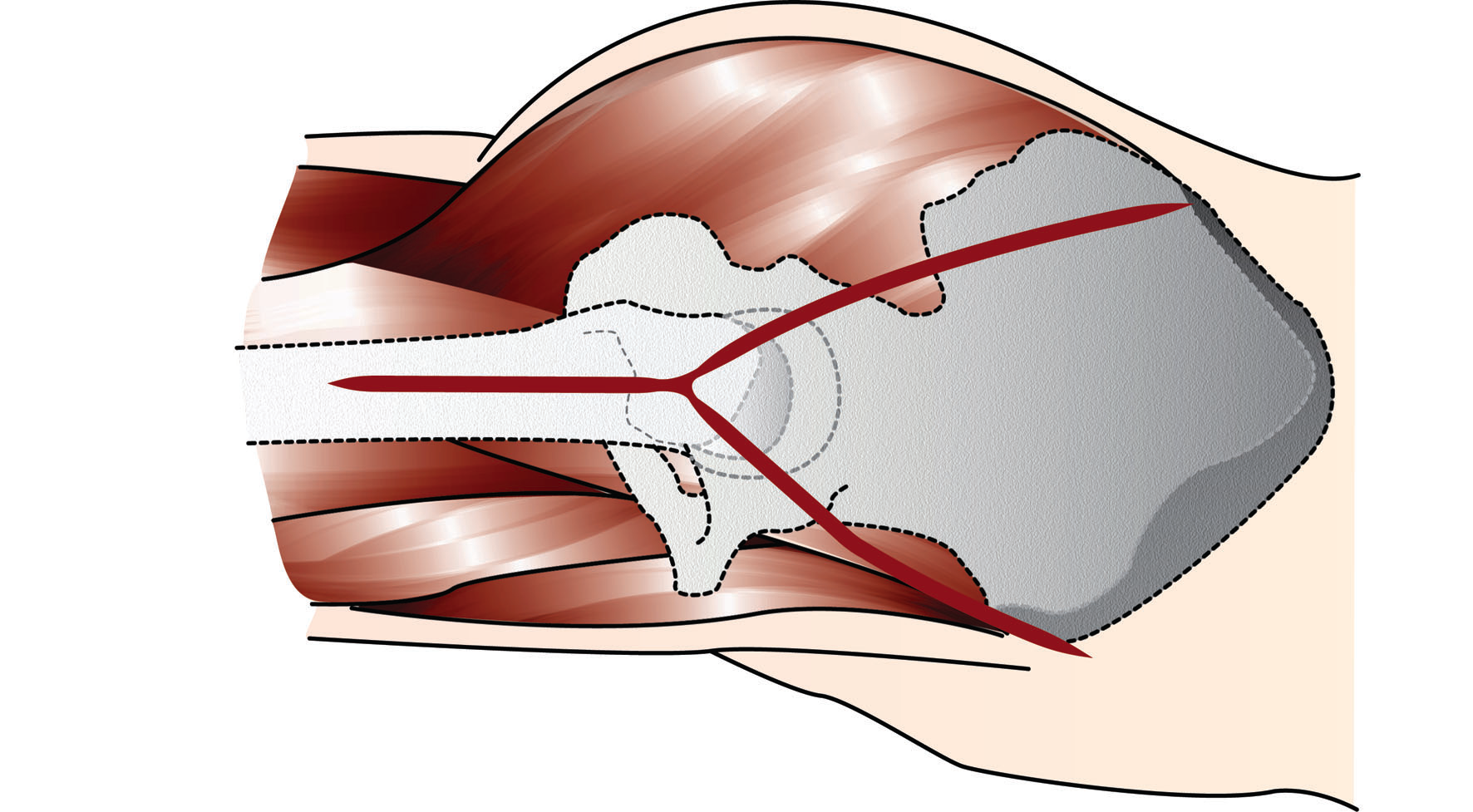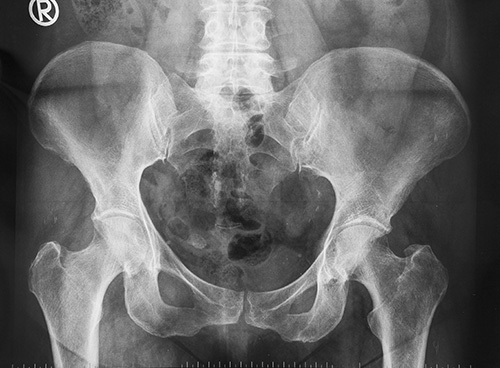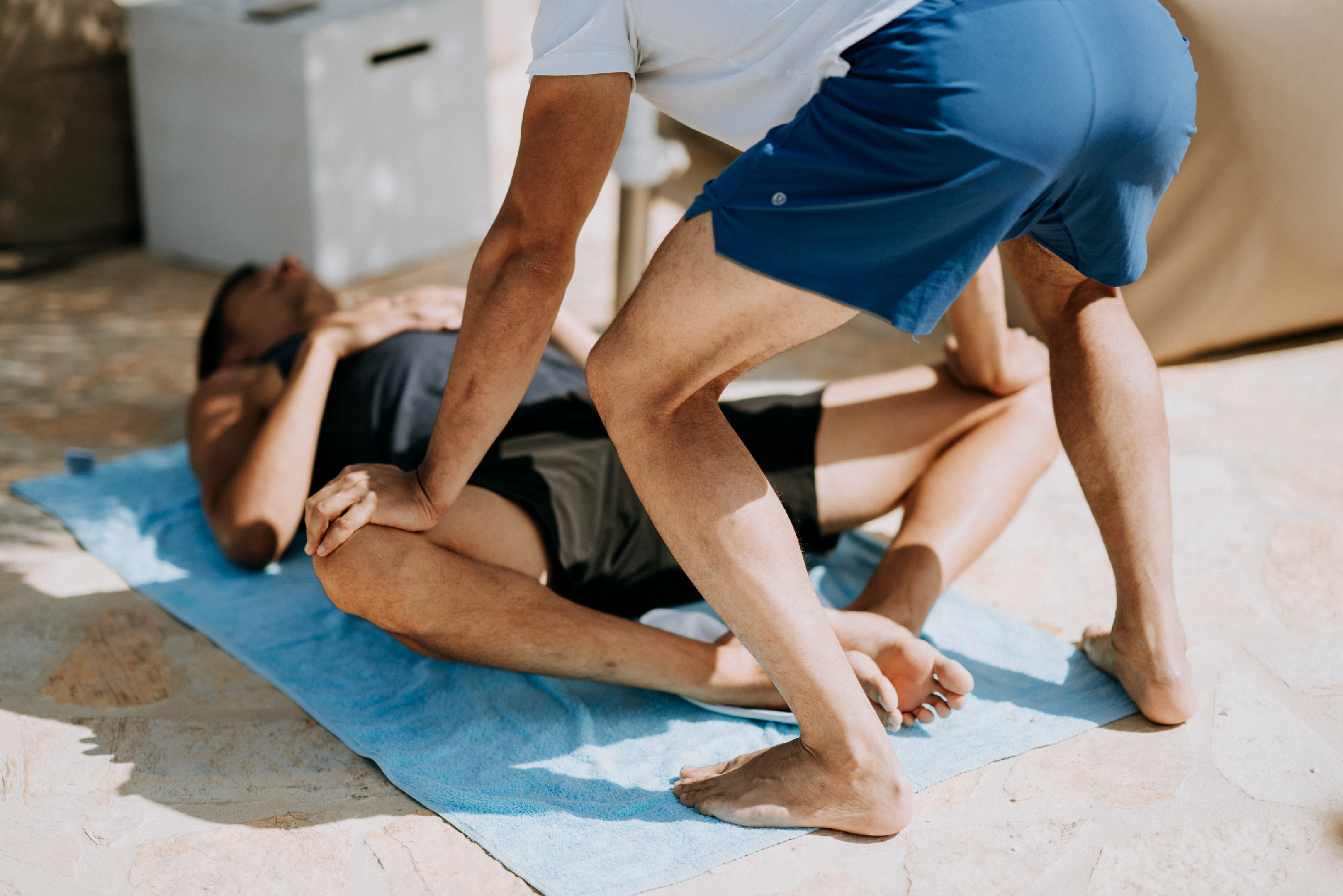Reviewed by: Mr William Sharples BSc (Hons) – Pain Management Expert
Last Updated: September 2025
What is Iliopsoas Bursitis?
Iliopsoas bursitis is the inflammation of the iliopsoas bursa—a fluid-filled sac that cushions the hip joint and reduces friction between bones, muscles, and tendons. This condition can cause significant hip and groin pain, limit mobility, and impact daily activities. Though rare, it often co-occurs with other hip or musculoskeletal conditions1.
Bursae are found throughout the body, especially near tendons, and their main role is to act as a cushion. Inflammation of any bursa is called bursitis. Iliopsoas bursitis can also be associated with other bursitis conditions, such as infrapatellar bursitis.
Studies show iliopsoas bursitis is rare, with a prevalence of 2.2% in symptomatic hip osteoarthritis patients2.
Structure of the Iliopsoas Muscle & Bursa
The iliopsoas muscle is the strongest hip flexor, made up of the iliacus and psoas major muscles. It attaches to the lumbar spine and femur, enabling hip flexion and contributing to posture3.
Iliopsoas Bursa
Also called the iliopectinate bursa, it is the largest bursa in the hip joint. Located beneath the iliopsoas muscle and anterior to the hip capsule, it separates the iliopsoas muscle from the joint and femoral vessels4.
Iliopsoas Tendon
The iliopsoas tendon connects the muscle to the femur. Inflammation of this tendon is called iliopsoas tendonitis, which can mimic bursitis symptoms.
Signs and Symptoms
The hallmark symptom of iliopsoas bursitis is pain at the front of the hip, often radiating to the groin, thigh, or knee. Other symptoms include:
- Hip and groin pain, especially when straightening the leg, climbing stairs, or rising from a chair5
- Morning stiffness
- Muscle weakness and limping
- Shortened stride and gait changes
- Rarely, fever or redness if the bursa is infected
Athletes may experience a shuffling gait or need a walking aid. Pain and weakness can worsen over weeks if untreated.
Causes and Risk Factors
Iliopsoas bursitis is most often caused by repetitive stress or overuse of the hip joint. Common risk factors include:
- Repetitive hip flexion (swimming, running, dancing)
- Chronic inflammation (rheumatoid arthritis, osteoarthritis)
- Tight hip flexor muscles
- Snapping hip syndrome (audible popping or snapping in the hip)6
- Direct trauma or injury
Overuse injuries are especially common in athletes and those with tight hip flexors.
Diagnosis
Physical Examination and Imaging
Diagnosis is based on a detailed history and physical exam, focusing on hip pain and movement. Imaging (X-ray, MRI, ultrasound) is used to confirm inflammation and rule out other causes. Bone scans may be used to exclude bone abnormalities.
Differential Diagnosis
Several conditions can mimic iliopsoas bursitis, including:
- Iliopsoas tendonitis
- Trochanteric bursitis
- Snapping hip syndrome
- Arthritis (rheumatoid or osteoarthritis)
- Intraperitoneal hernias
- Iliac/femoral vessel aneurysms
Treatment of Iliopsoas Bursitis
Treatment aims to reduce inflammation and pain, restore mobility, and prevent recurrence. Most cases respond well to conservative management:
- Rest: Avoid activities that aggravate symptoms.
- Medications: NSAIDs and oral steroids can reduce pain and swelling.
- Ultrasound-guided injections: Corticosteroid and anesthetic injections provide rapid relief7.
Physical Therapy and Strengthening Exercises
Physical therapy is essential for recovery. Therapists focus on stretching and strengthening the hip flexors, rotators, and gluteal muscles to restore function and prevent recurrence.
Prolotherapy
In recent years, Prolotherapy has built its reputation within the medical community for its clinically proven ability to treat Iliopsoas Bursitis.
Published research has proven its pain-relieving, anti-inflammatory and regenerative benefits.
Prolotherapy involves injecting a natural regenerative solution with tiny needles. This has been shown to stimulate the production of collagen cells, the small cells needed to help with Iliopsoas Bursitis.
As prolotherapy is helping to treat the root cause of Iliopsoas Bursitis, it is deemed to be a permanent fix, preventing the symptoms from returning.
Disclaimer: The information provided in this section is for educational purposes only and is not a substitute for professional medical advice, diagnosis, or treatment. Prolotherapy may not be suitable for everyone, and outcomes can vary. Always seek the guidance of a qualified healthcare professional regarding your specific medical condition or treatment options. Never disregard professional medical advice or delay seeking it because of information you have read here.
Surgery
Surgery is rarely needed. It may be considered for severe or refractory cases, such as synovectomy (removal of the synovial membrane), bursectomy (removal of the bursa), or iliopsoas tendon release, especially in athletes8.
How to Prevent Iliopsoas Bursitis
Prevention focuses on strengthening hip muscles, especially the rotators and gluteals. Athletes should perform regular stretching and strengthening exercises, retrain gait, and address muscle imbalances to reduce risk.
Frequently Asked Questions
What does iliopsoas bursitis feel like?
Pain at the front of the hip, aggravated by climbing stairs, standing, or extending the leg. Pain may radiate to the groin, thigh, or knee, and is often accompanied by stiffness and weakness.
How do you treat iliopsoas bursitis?
Most cases improve with rest, NSAIDs, and physical therapy. Ultrasound-guided corticosteroid injections can provide rapid relief. Surgery is reserved for severe cases.
Will iliopsoas bursitis go away?
Yes, most cases heal with conservative care, rest, and physical therapy. Avoiding aggravating activities is key to recovery.
How long does it take for the iliopsoas bursa to heal?
With proper rest and therapy, pain relief is often seen in 6–8 weeks.
What is iliopsoas bursitis?
Inflammation of the iliopsoas bursa in the hip joint, causing pain, stiffness, and gait changes. It is common in athletes and those with repetitive hip use.
What aggravates hip bursitis?
Physical stress, running, rowing, and swimming can worsen symptoms. Rest and anti-inflammatory medications help reduce pain and swelling.
Contact ProHealth Clinic Today for Your FREE 15-Minute Discovery Call
Don’t let Iliopsoas Bursitis control your life any longer. Join the thousands of patients who have found lasting relief through prolotherapy at ProHealth Clinic.
Get in Touch
- Phone: +44 1234 380345
- Email: info@prohealthclinic.co.uk
Our Clinic Locations
- London: 104 Harley Street, Marylebone, W1G 7JD
- Manchester: The Hadley Clinic, 64 Bridge Street, M3 3BN
- Bedford: The Village Medical Centre, Kingswood Way, MK40 4GH
All clinics offer the same award-winning prolotherapy treatment with convenient appointment times, including evenings and weekends.
Author Bio
Having performed over 10,000 procedures, Mr Oliver Eaton is one of the UK’s leading practitioners in the field of treating Iliopsoas Bursitis, with patients travelling to see him from across the UK, Europe, and the Middle East.
With over 12 years of clinical experience, Oliver is dedicated to helping patients understand their symptoms associated with Iliopsoas Bursitis and providing effective treatment options to alleviate them.
He qualified in Prolozone Therapy and Prolotherapy in America with the American Academy of Ozonotherapy. He continued on to complete further qualifications at the Royal Society of Medicine, Charing Cross Hospital in London, Keele University’s Anatomy & Surgical Training Centre, and the medical department of Heidelberg University in Germany.
Mr Eaton’s expertise has been featured in many national news and media publications, including The Telegraph, The Daily Mail, The Daily Express, Women’s Health Magazine, and The Scotsman.
Over the years he has had the privilege of treating many elite-level athletes, including both Olympic and Commonwealth medallists.
LinkedIn profile
References
- 2021 study: Iliopsoas bursitis in hip arthroplasty patients
- 2022 study: Prevalence in hip osteoarthritis
- Iliopsoas muscle anatomy: Kenhub
- Iliopsoas bursa: Radiopaedia
- Groin pain in athletes: PMCID: PMC6132908
- Snapping hip syndrome: NCBI Bookshelf
- Ultrasound-guided injection: Springer
- Surgical management: Springer
Disclaimer: This article is for informational purposes only and does not substitute for professional medical advice. Always consult your healthcare provider before making treatment decisions.





